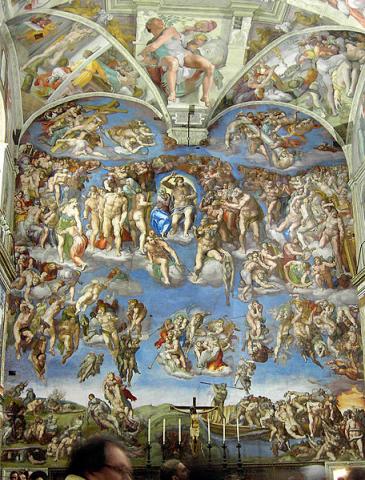The Sistine Chapel
The Sistine Chapel
Michelangelo: The Sistine Chapel

The Cappella Sistina was named after pope Sixtus IV (1471-84), who decided to have a large room built in place of a Medieval fortified hall, once used by the Papal Court for assemblies.
Construction works were initiated in 1475 and completed in 1483. It was, however, Sixtus IV’s nephew, Giuliano della Rovere, known as pope Julius II (1503-1513), to remain more powerfully associated with the Cappella Sistina, as he was the one commissioning its decoration to Michelangelo Buonarroti. At the time, Michelangelo was already well known in Florence and had already worked in Rome for the previous pope.
After some initial reluctance (he considered himself more of a sculptor than a painter), Michelangelo undertook the task of decorating the chapel. The theme chosen was that of the history of mankind before the coming of Christ. Later on, between 1536 and 1541, Michelangelo also painted the Last Judgment, who was commissioned by pope Paul III.
The vault, Michelangelo's masterpiece, is one of the most important paintings in the world. It covers 800 square meters of the chapel’s walls and it was realized used the technique of “buon fresco”, which means figures were painted on wet plaster. The images of the vault represent humanity's long wait for Christ, the prophecies foreseeing his coming, and scenes from the Genesis. All figures are set in a monumental, almost architectural background, created to emphasize the harmony of their composition.
